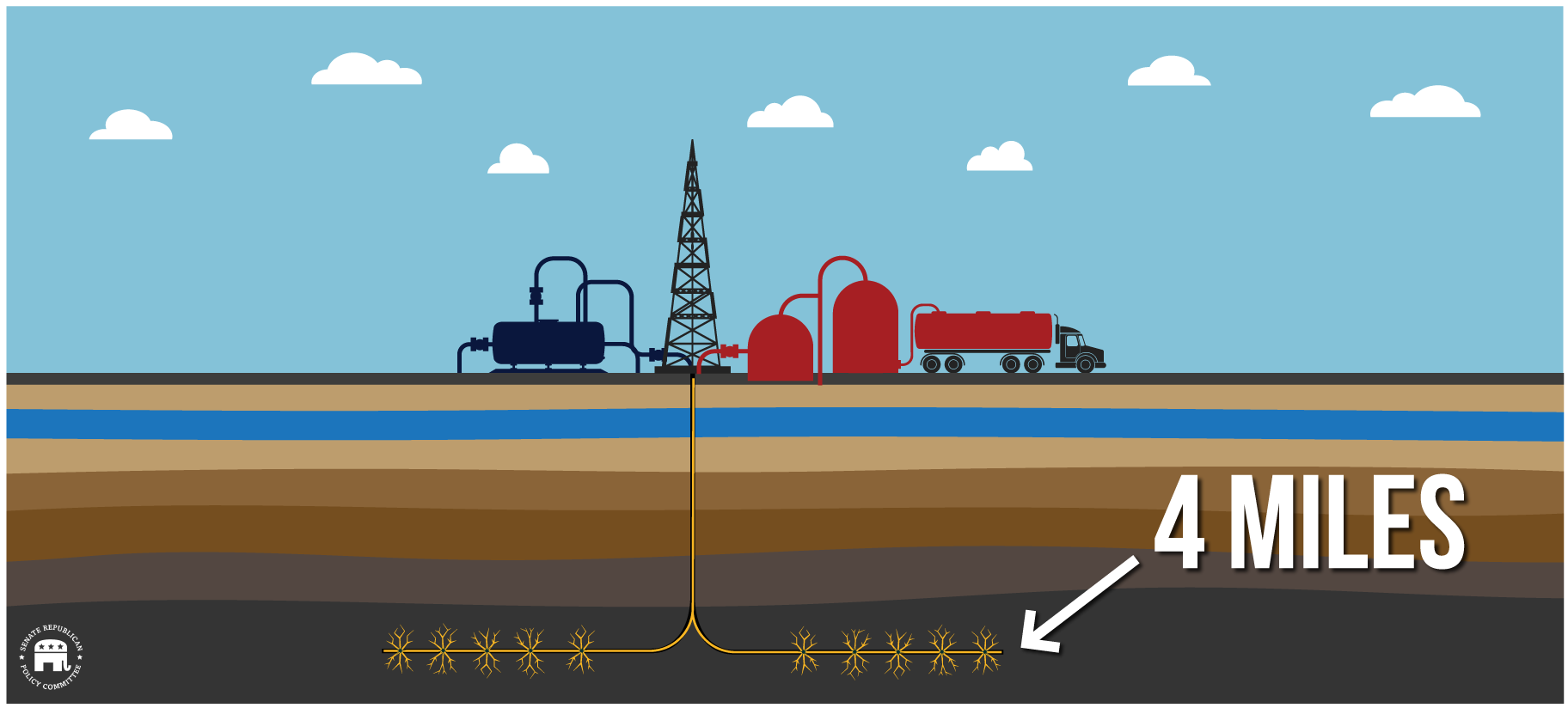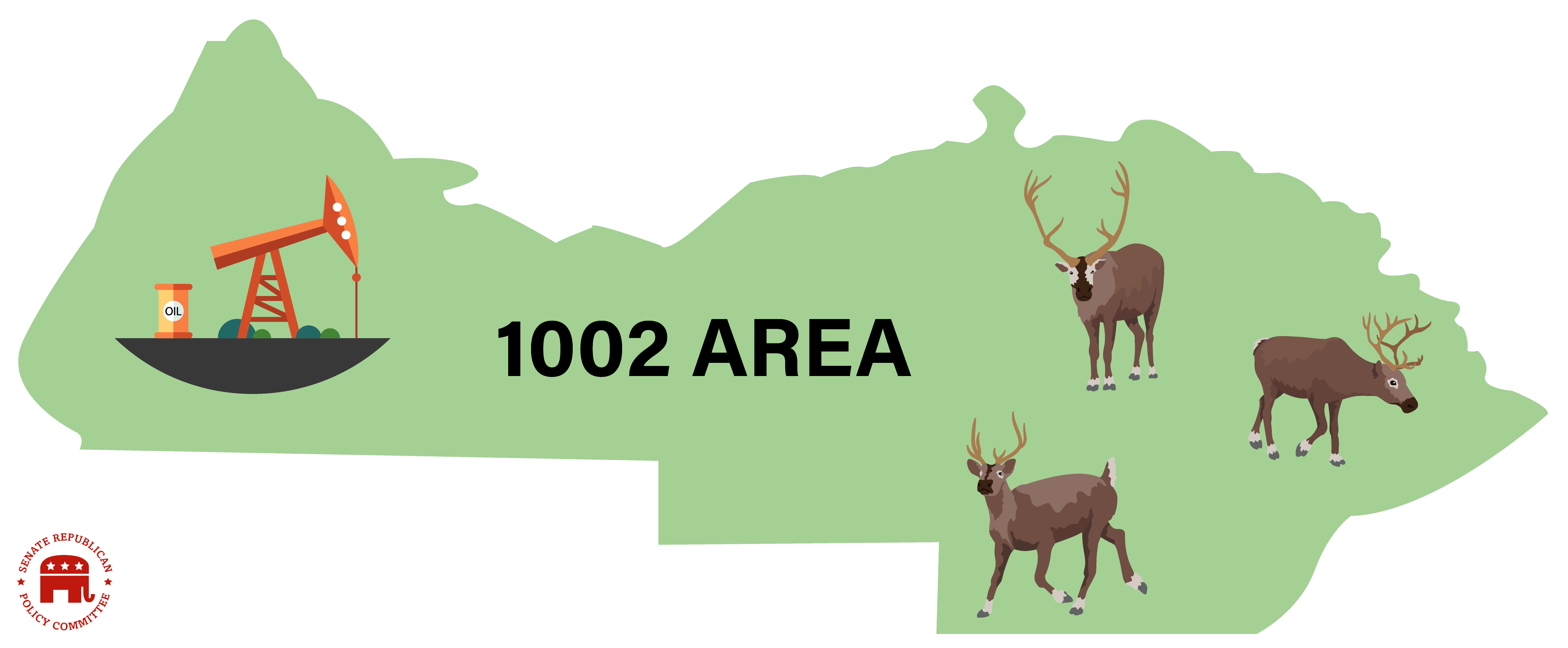ANWR: U.S. Energy Dominance
- Development of a tiny, oil-rich section of ANWR will contribute to American energy dominance by adding 1 million barrels of oil in daily production, roughly a quarter of our net daily imports.
- The land in question is not wilderness. It was specifically set aside during the Carter administration for potential oil and natural gas development.
- On Wednesday, the Energy and Natural Resources Committee will mark up a bill to develop this section of ANWR, satisfying the tax reform reconciliation instruction to ENR to save at least $1 billion over 10 years.
There has been debate for decades about allowing energy development to occur in the 1002 Area – or coastal plain – of the non-wilderness portion of Alaska’s Arctic National Wildlife Refuge. These arguments have largely run over the same ground. Republicans point to the clear value of the oil in the area, and Democrats argue that development could affect local wildlife.
The facts underlying the debate, however, have changed significantly. New technology allows exploration and development to be done in a much smaller area. Better understanding of the area’s ecology has also allowed exploration proposals to target oil-rich areas that are less significant to the local wildlife.
Size of Proposed Operations in ANWR
 Source: Alaska Dept. of Natural Resources
Source: Alaska Dept. of Natural Resources
SURFACE LAND NEEDED FOR OIL EXPLORATION REDUCED BY 80 PERCENT
The entire refuge covers 19.3 million acres, about the size of South Carolina. When Congress created ANWR in 1980, it contemplated future energy development by calling for further study of a limited area. This is known as the 1002 Area, named after the section of law that created it. The 1002 Area is a 1.5-million acre segment of the coastal plain on the Arctic Ocean and amounts to about 8 percent of the refuge. None of it is designated as federal wilderness.
In the 1990s, the energy industry estimated that exploration would require 12,700 acres of surface area. Today, effective oil exploration would need just 2,000 acres, an area about the size of the Talladega Superspeedway complex.
One key factor in the amount of surface area needed is the maximum reach of each oil well. In the 1980s, wells had a maximum reach of about two miles horizontally. Today, wells can reach as far as seven miles, and typical platforms in Alaska regularly extend four miles. That allows a single platform to cover 10 times the area it could have when the ANWR debate began.
Recent Alaskan developments show the dramatic difference technology has made. A collection of 20 oil wells at Prudhoe Bay, one of the oldest Alaskan oil development areas established in the 1960s, covered about 65 acres. At the relatively new Alpine field in Alaska, 20 or more wells cover less than 10 acres.
Directional Drilling Extends Well Range

DATA SHOW MINIMAL THREAT TO LOCAL WILDLIFE
Environmentalist objections to development in the 1002 Area focus on the potential impact of energy production on local wildlife. Specifically, environmentalists worry activities could drive Porcupine caribou away from potential calving grounds.
Over the past 20 years, better scientific understanding has helped allay concerns about caribou calves. Ecologists now know that the herd of 197,000 Porcupine caribou appear to be mostly where the oil is not. The herd primarily calves in the southern and eastern parts of the 1002 Area, while the U.S. Geological Survey estimates that more than 80 percent of the oil is in the northern and western parts of the section.
Oil and Porcupine Caribou Occupy Different Sections of 1002 Area

BENEFITS OF EXPLORATION HAVE INCREASED
At the same time the impact on the land and wildlife have dramatically declined, the benefits of exploring for energy in ANWR’s 1002 Area have grown since the debate began. In 1987, the USGS estimated the 1002 Area contained a high of 13.8 billion barrels of oil. The current best estimate from USGS is 20.7 billion barrels. That could produce about 1 million barrels of oil per day, roughly a quarter of U.S. daily net oil imports.
The Congressional Research Service says that the federal government would receive up to $296 billion over 30 years, depending on oil prices.
CONGRESS HAS TRied TO OPEN the 1002 Area FOR 30 YEARS
Debate over the 1002 Area began in 1980, when President Carter signed the Alaska National Interest Lands Conservation Act that created the boundaries of ANWR. The law required congressional authorization for any oil and gas program on the coastal plain.
Dozens of bills have proposed opening the 1002 Area to exploration since then, and the topic has periodically reemerged for public debate. In September 1987, the Interior Department recommended Congress open the 1002 Area for development. House and Senate committees approved bills to allow exploration in this limited part of ANWR in 1989, but that effort eventually stalled out.
ANWR exploration was part of the Balanced Budget Act of 1995 passed by both the House and Senate, but President Clinton vetoed the bill. Exploration again came close to enactment in 2005, when it was included in the Senate-passed budget reconciliation bill and then in the Senate Defense Appropriations bill. Senate Democrats threatened to filibuster the Defense Appropriations bill, and the ANWR provision was dropped.
Next Article Previous Article
